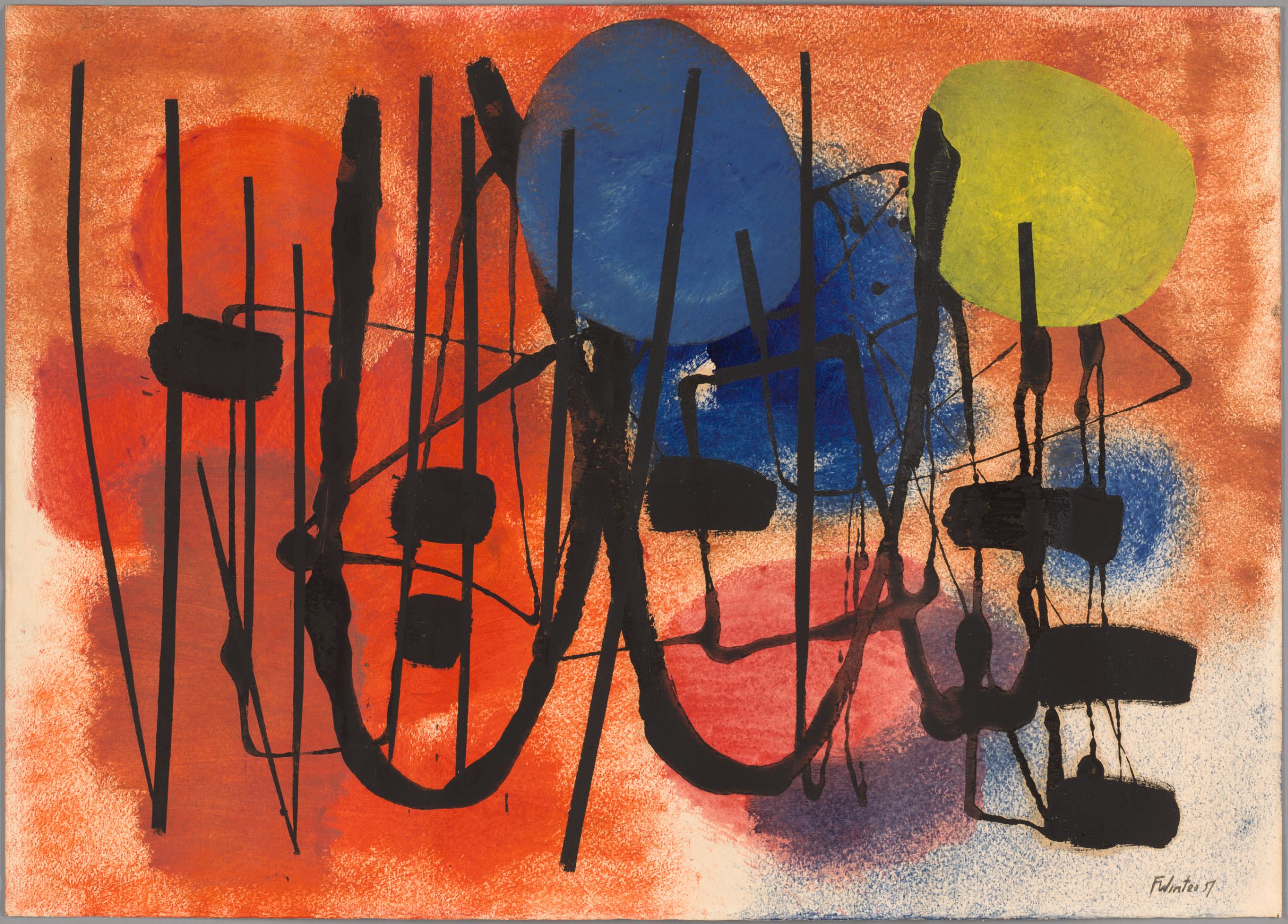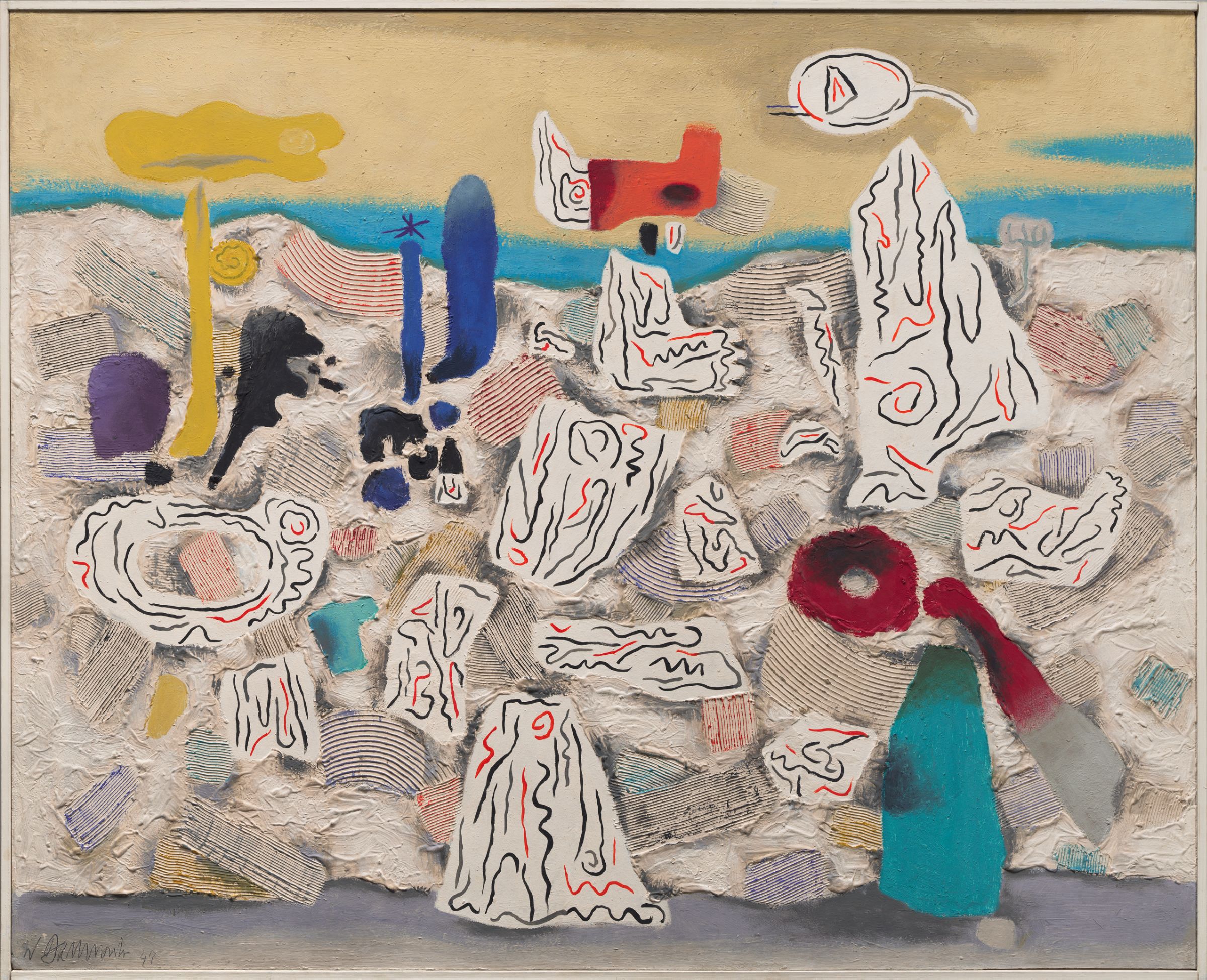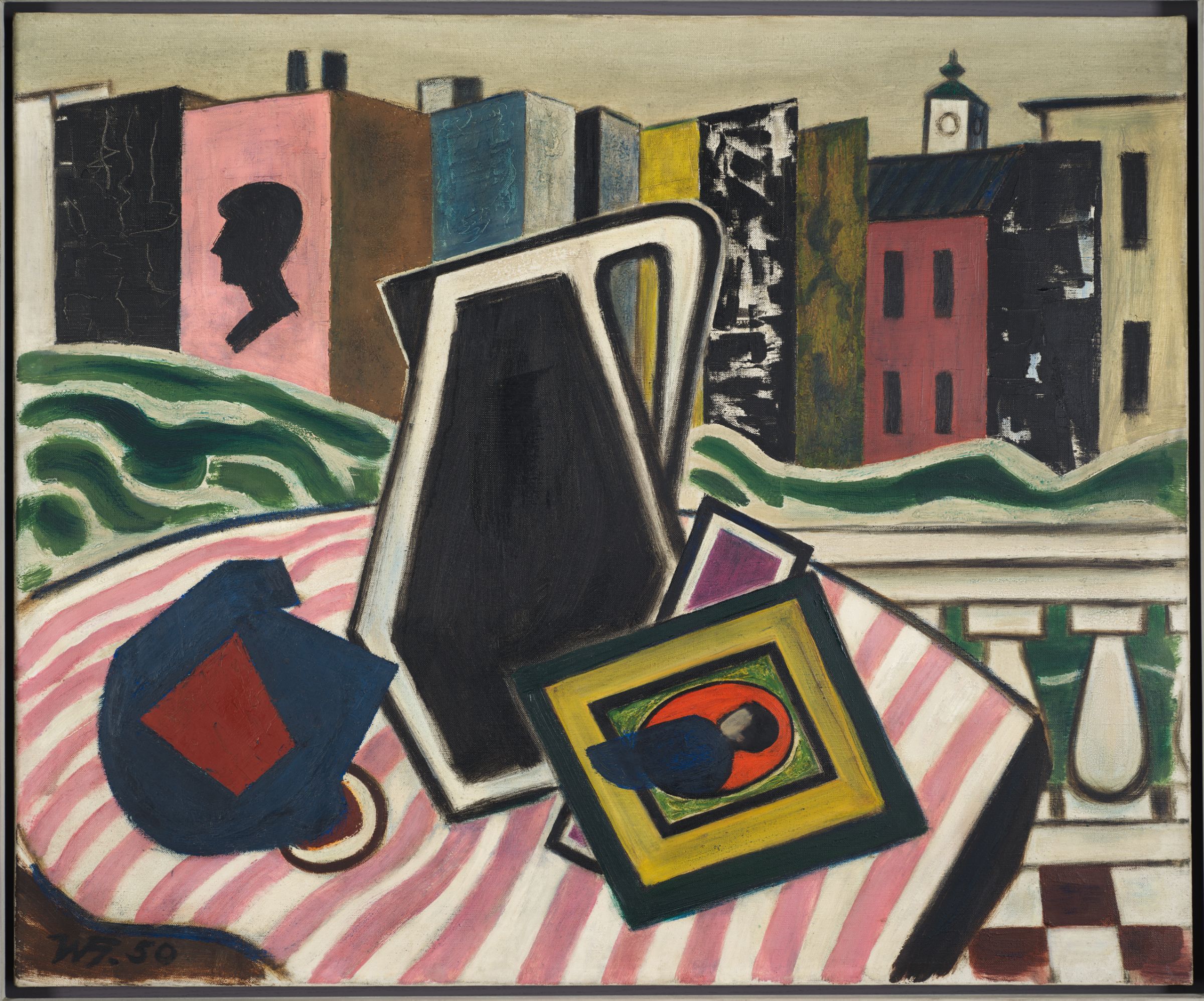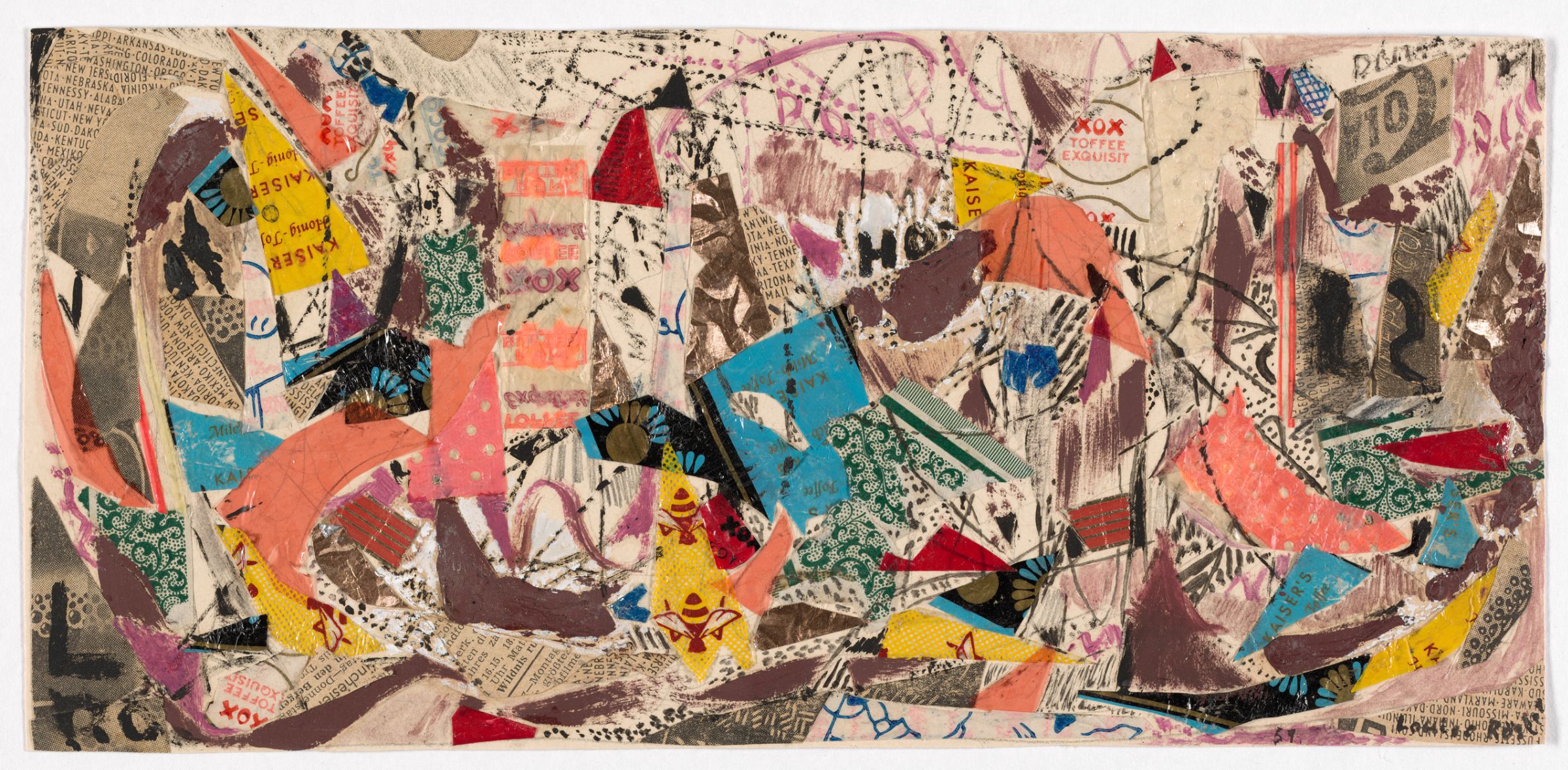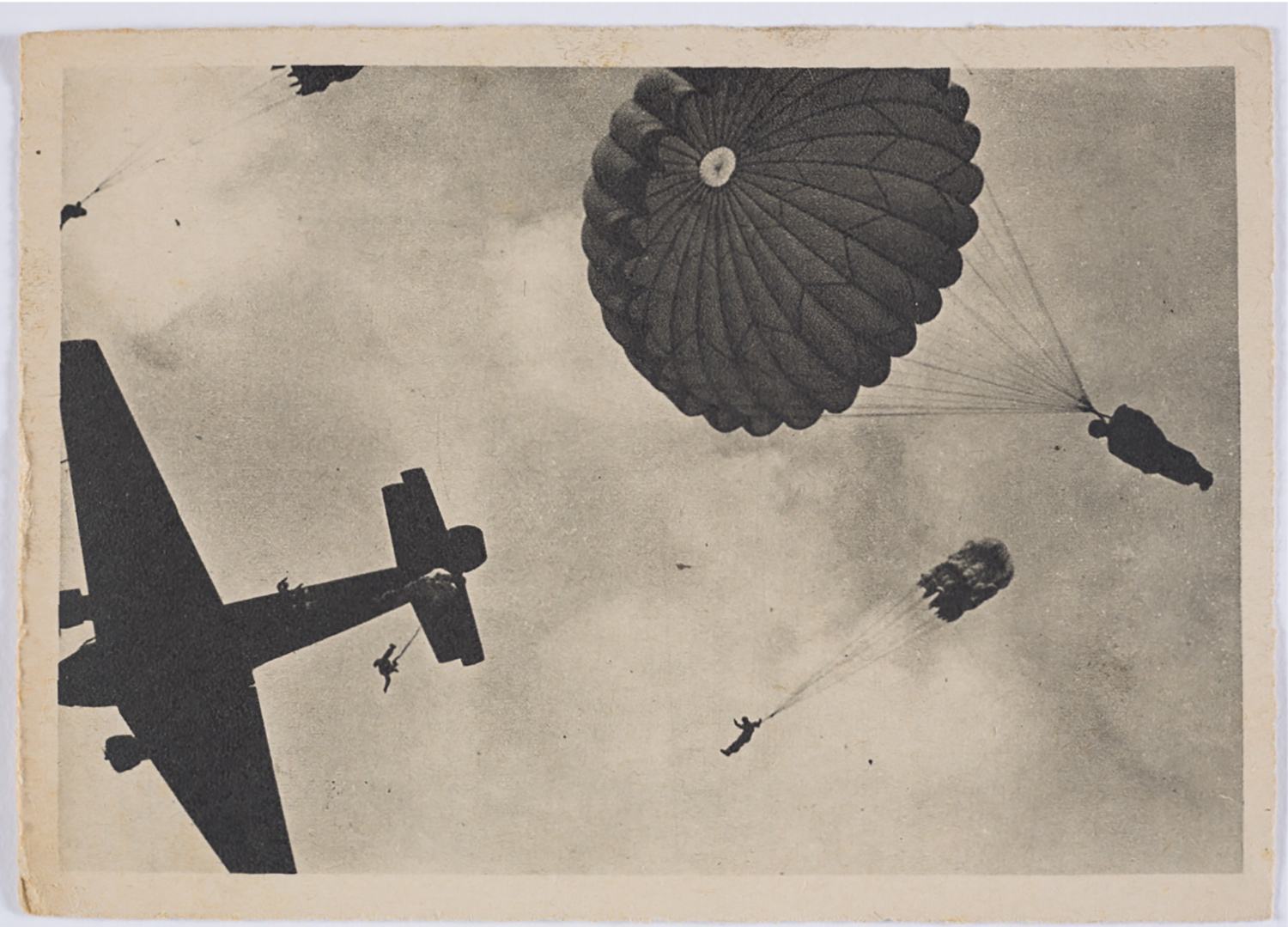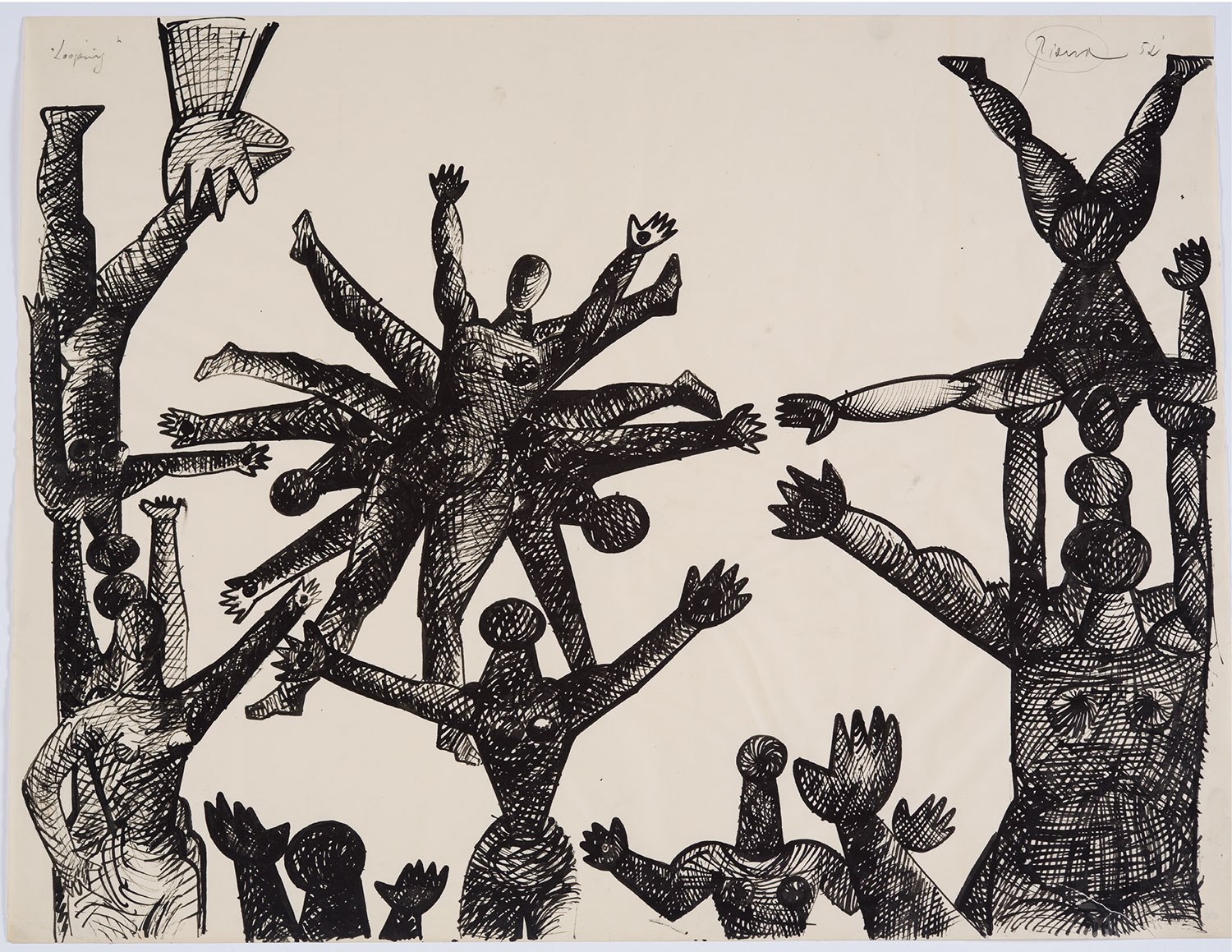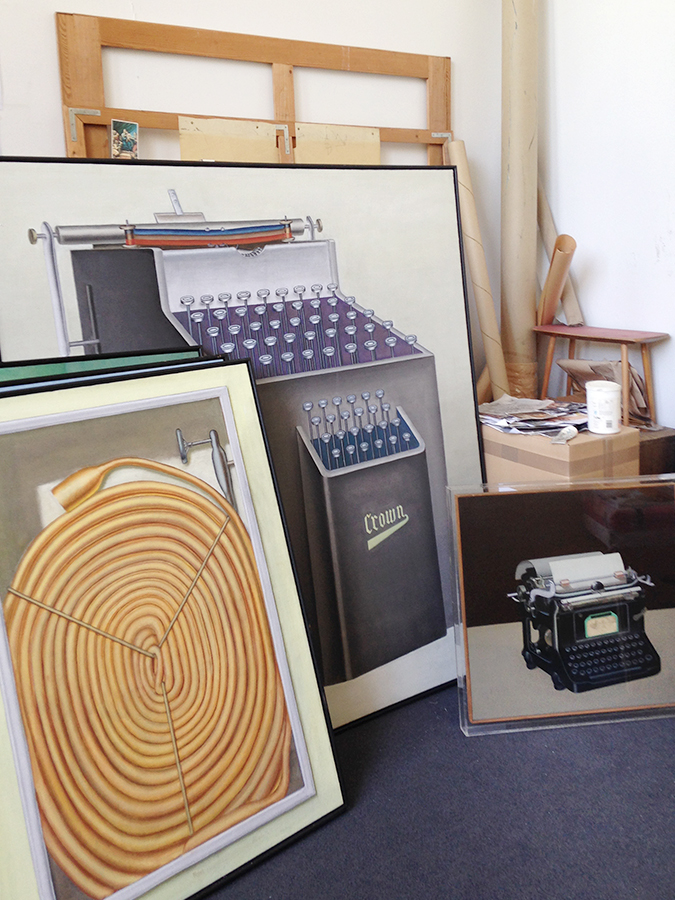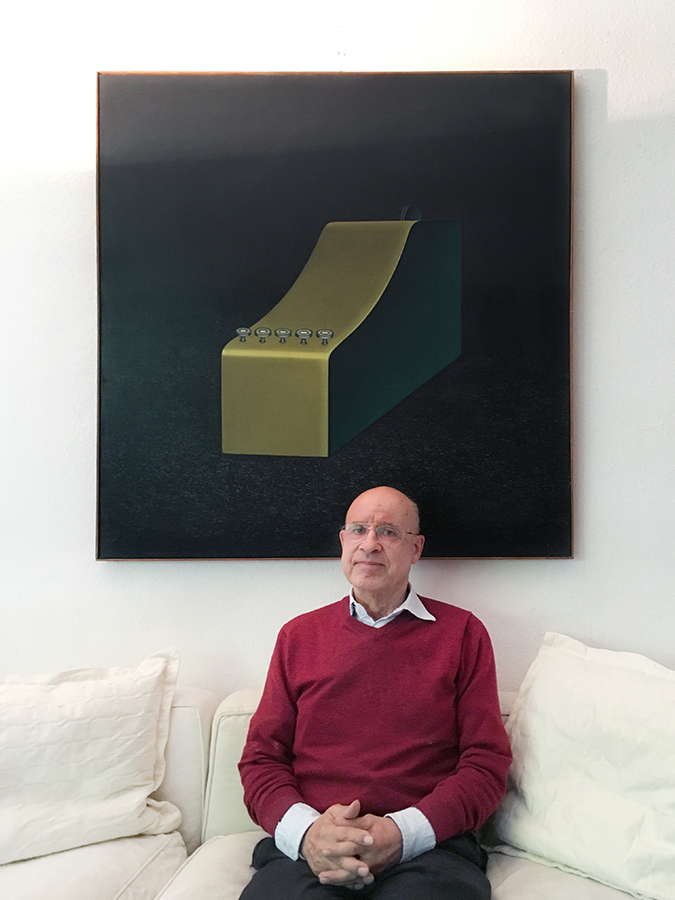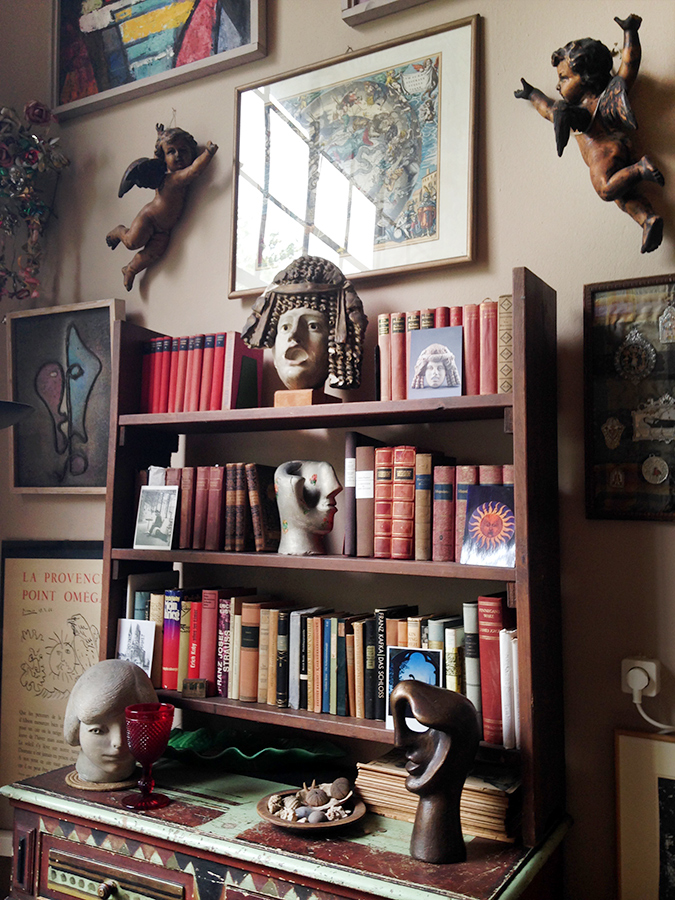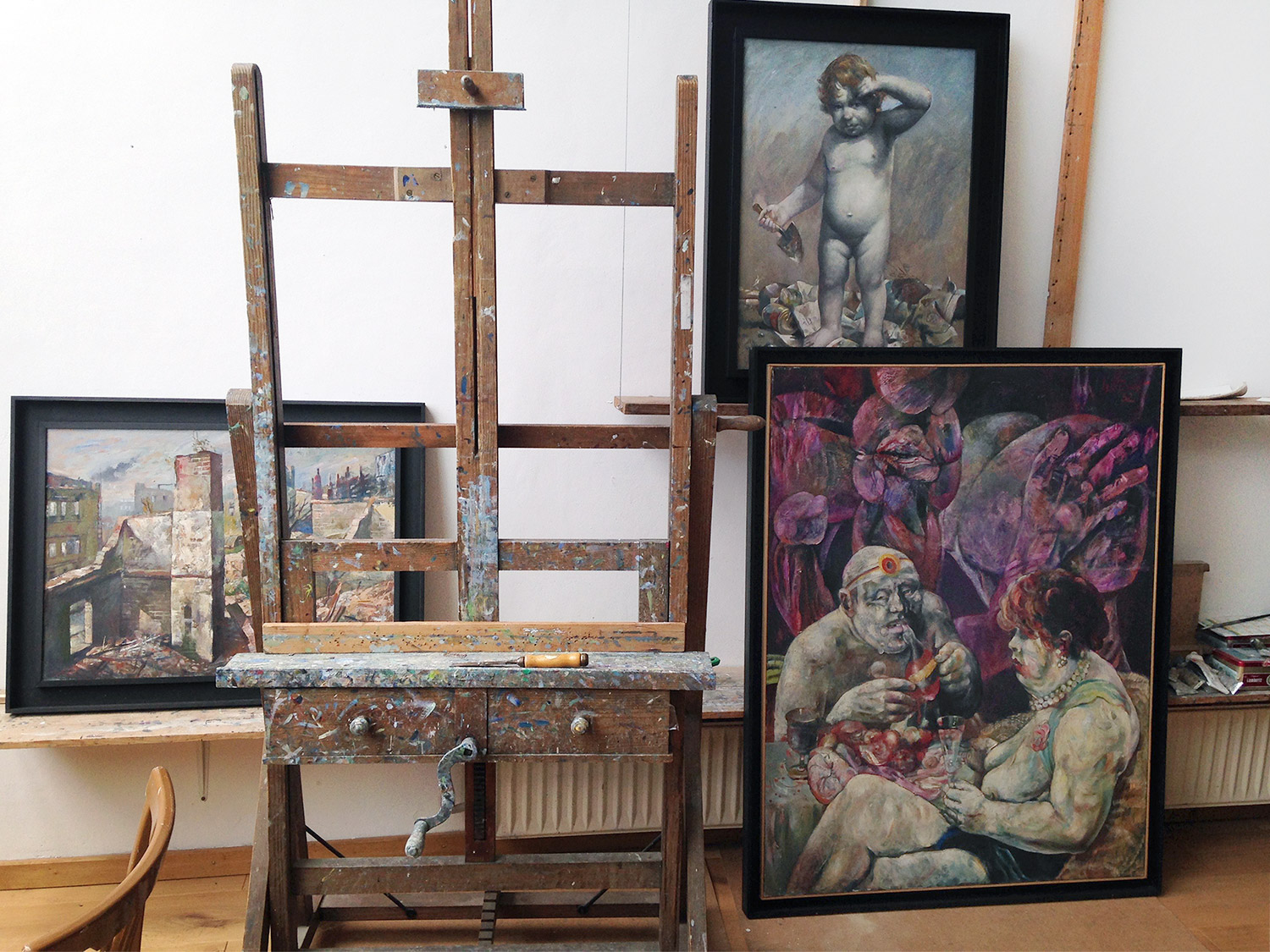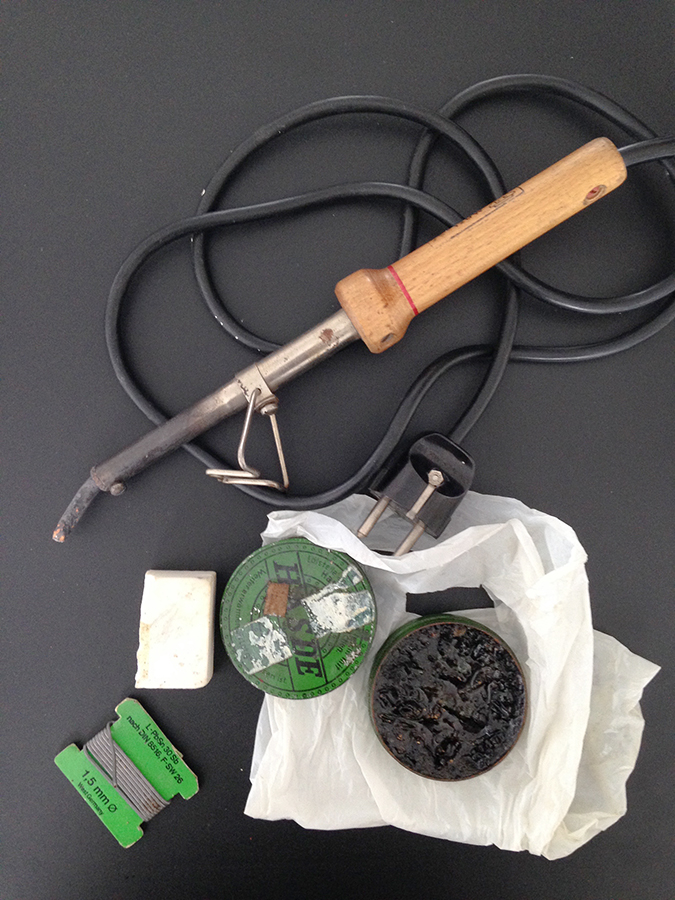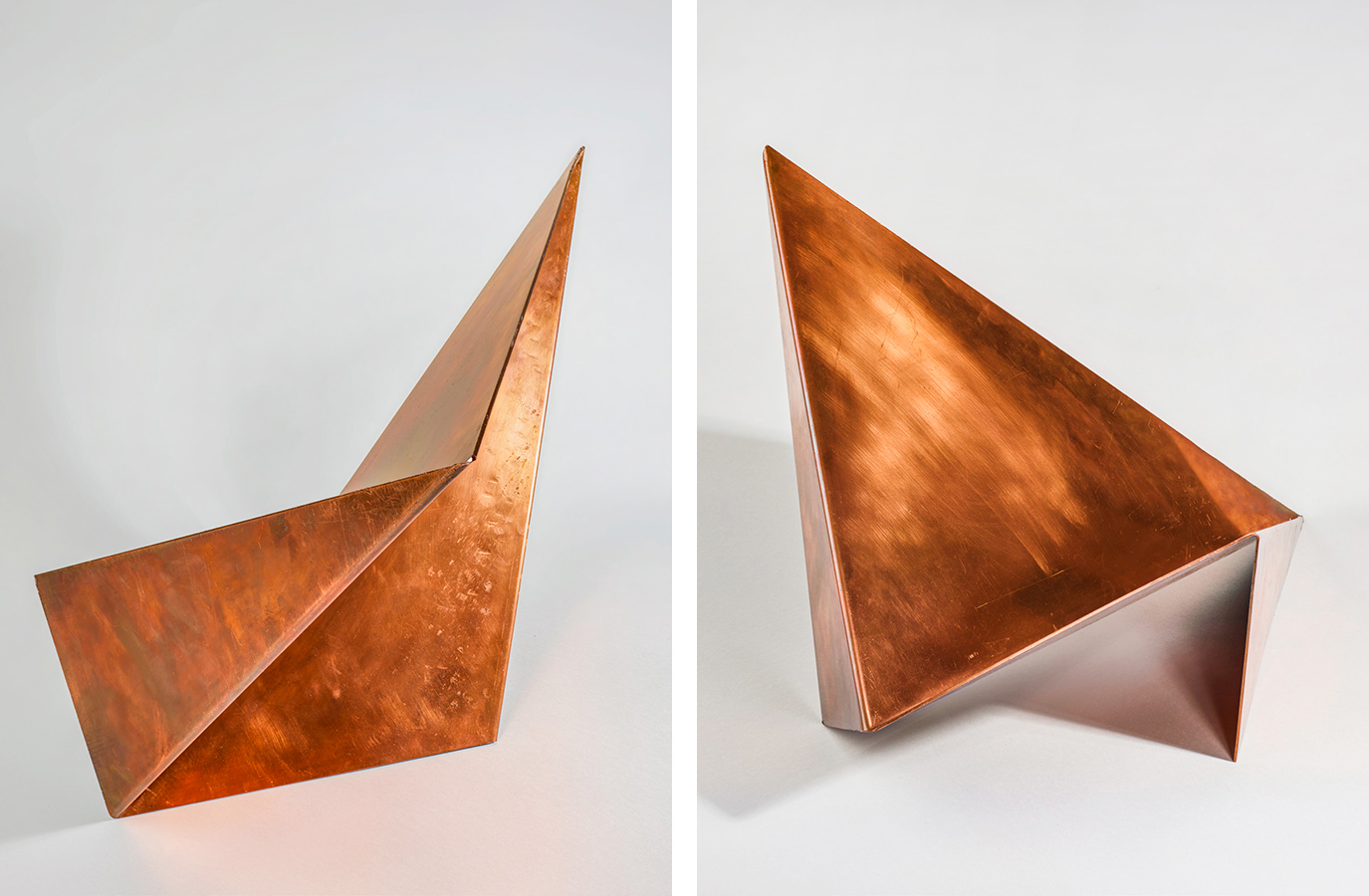After more than a decade of experimental art making in a range of media, German artist K. O. Götz emerged in the 1950s as a major proponent of abstract painting, known more broadly in Europe as art informel. His groundbreaking June 1954/II (1954), created with casein applied to a glue-primed canvas using a blade or hard-edged squeegee, has previously been displayed in the Harvard Art Museums’ postwar galleries, shown together with works from other European countries and the United States.
Putting It Together

Our latest special exhibition, Inventur—Art in Germany, 1943–55 (February 9–June 3, 2018), provides a new context for the painting. Presented alongside earlier works by Götz as well as examples from his German contemporaries, June 1954/II can be seen as responding to the specific concerns and conditions that Germany and its artists faced in the tumultuous years after the end of World War II.
The painting became a centerpiece of the research and planning for Inventur from the moment it was given to the Busch-Reisinger Museum by an anonymous donor in 2012. Lynette Roth, the Daimler Curator of the Busch-Reisinger Museum and head of the Division of Modern and Contemporary Art, met on multiple occasions with Götz (who passed away in 2017 at the age of 103).
“It was an inspiration to receive the painting after having conversations with Götz, who was one of the few remaining German artists of that period,” said Roth, who dedicated the exhibition catalogue to Götz. “Talking to him about his development and his highly experimental techniques, as well as about the personal and historical circumstances around art making in Germany in the wake of the Second World War, was incredibly important.”
Like Günter Eich’s poem of the same name, Inventur (German for “inventory”) focuses on acts of artistic, physical, and moral stocktaking in the immediate postwar period. After the Nazi regime stifled or in some cases completely barred them from working or exhibiting, artists dealt not only with material scarcity but with inadequate living conditions in the years following the war. They were active participants in the re-emergence of Germany’s art scene, and yet they faced ongoing hostility from a public still influenced by Nazi cultural policies.
For these reasons and more, German art from this period has largely been overlooked or left out of the art historical narrative altogether. Inventur aims to remedy that by bringing together more than 160 works in a variety of media produced by nearly 50 artists; the works are drawn from the Harvard Art Museums collections, German and American institutions, and private collections from around the world. Taking such an in-depth look reveals just how important this art is to understanding German cultural identity in the 20th century.
“Inventur points to the tenuousness—even fragility—of the art making of the period, but also to the incredible experimental drive of these artists,” Roth said. “In some ways it’s a hopeful message: there was a belief in this moment that modern art had a real role to play, even by artists whose voices had been muted during the Nazi period.”
Essential Research
In the exhibition’s early stages of development, Roth partnered with Ilka Voermann, the former Renke B. and Pamela M. Thye Curatorial Fellow, to revisit relevant postwar German art in the Busch-Reisinger collection, such as Fritz Winter’s In Front of Red (1951). Together they updated and refined information in object records, ultimately selecting a number of the works for inclusion in the exhibition.
“There was a belief in this moment that art had a real role to play, even by artists whose voices had been muted during the Nazi period.”
At the same time, Roth began to acquire new works to further strengthen this collection area. In preparing for the exhibition she cast a broad net to identify less familiar artists; in order to avoid the “usual suspects” (namely, West German abstract artists), she asked colleagues at German art institutions to send lists of all the works in their collections produced between 1943 and 1955. Next, she and Voermann completed a series of visits to the various collections, viewing and narrowing down what turned out to be a list of thousands of objects.
Besides Voermann (now a curator at the Schirn Kunsthalle in Frankfurt), Roth was assisted by a number of emerging curatorial professionals, including Harvard Ph.D. candidates and interns Jungmin Lee and Olivia Crough. Though the preparatory work was demanding, it was also essential. Many of the artists chosen as “case studies” for the exhibition had “fallen out of the narrative,” Roth said, including women, those working in the Soviet occupied zone and later the German Democratic Republic, and those working in smaller formats or nontraditional media.
New Perspectives on Featured Artists
Voermann had the opportunity to conduct firsthand research on one of these understudied artists: Louise Rösler, a female artist stymied by Nazi regulation, but who created colorful and unusual collages in the postwar years despite personal hardship. After the war (and the disappearance of her husband, Walter Kröhnke), Rösler was evacuated from Berlin with her young daughter and resettled in the small town of Königstein, near Frankfurt. She went on to produce collages (such as the 1951 work Composition with Red Ribbon) that integrate colorful candy wrappers discarded on the streets by American soldiers. Rösler’s daughter, Anka Kröhnke, shared memories of helping her mother collect those materials—literal trash transformed into art.
“I came to realize that these collages tell a lot about the time period and the lack of materials—but also about the creative power and energy that can emerge in a situation like this,” said Voermann, who visited Kröhnke at the Museum Atelierhaus Rösler-Kröhnke in Ostseebad Kühlungsborn. In the end, the museums purchased five works by Rösler; all will be featured in the exhibition.
Closer to home, Jungmin Lee traveled with Roth to the estate of Otto Piene in Groton, Massachusetts, to meet with his widow, Elizabeth Goldring. Lee was familiar with the artist from her own research on contemporary and kinetic art, but the visit deepened her knowledge.
Among the materials that Lee studied was a postcard sent by Piene to his mother on September 4, 1944, while he was serving in the war. (Piene was drafted at the age of 15 as a Kindersoldat, or child soldier.) The front of the postcard features a photograph, shot from below, of figures parachuting from an airplane. That imagery—together with the understanding that Piene would have seen these very sorts of scenes during his time at war—resonated with Lee.
“It was very curious to see how the scenes he witnessed when first serving in the German army became a theme that ran throughout his work,” Lee said. In fact, she continued, Piene’s works in Inventur—such as examples from his 1952 series Flying People, which includes approximately 18 drawings inspired by the circus—demonstrate his lifetime fascination with the sky and human flight, an interest he sustained even after joining MIT’s Center for Advanced Visual Studies in 1968.
Close Looking
Given the new territory that Inventur is covering, it makes sense that preparing for it required sustained, in-person study of each object. Those who worked on the project were nevertheless struck by just how important such close looking was to their research and thinking.
“Seeing the objects in person was crucial,” said Lee, who scheduled visits in the museums’ Art Study Center to examine each work that she was assigned to write about. “In a way, it helps the art come alive and be tangible in your mind.”
Ph.D. candidate Olivia Crough, who studied works by Hermann Glöckner, among others, found this especially true. During her travels to Munich and Dresden in October 2016 to conduct research for the exhibition catalogue, she viewed Glöckner’s Spatial Refraction of a Rectangle (1945–46), a copper sculpture that reproduced to scale a 1935 brass version destroyed during Allied bombing in 1945.
Though Crough had fashioned her own maquette (a small model) with the artist’s measurements prior to her visit, “encountering it in person gave [her] an understanding of its heft, patina, and the dramatic shifts in the way the sculpture inhabits space and reflects light based on its position,” she said. (Thanks to the generosity of German supporters Kathrin Presser-Velder and Markus Michalke, the Glöckner sculpture is now a promised gift to the museums. In addition, Sebastian Schmidt, of Dresden, donated a suite of 17 works by the artist, giving the Harvard Art Museums the strongest Glöckner collection in the United States.)
An exhibition based on such close looking and original research—and particularly one focused on an understudied area of art history—is well suited to the Harvard Art Museums. The new scholarship advanced by Roth and her colleagues will no doubt bring fresh light to this vital chapter in German art making—one that can be fully understood only when situated within the broader context of 20th-century Western art.

